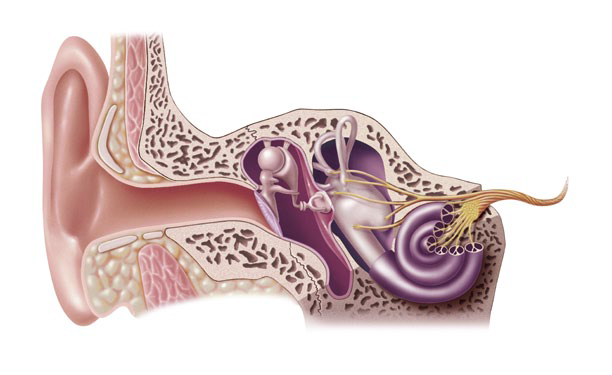

How Do We Hear?
In general terms, we hear when sound waves enter the ear canal and cause the eardrum and middle ear bones to vibrate. This sends an electrical signal from the inner ear, via the hearing nerve to the brain.
Our ears basically perform like radar antenna to register acoustic signals coming from various directions. The intricate structures of each ear, process each signal that’s received, and transfers it to the brain where we then interpret and make sense of our acoustic environment.
Consider the sound of a nearby truck for example; the closest ear receives the sound somewhat earlier (and louder) than the other ear. Through the finely processed acoustic information we receive in each ear, the brain is able to miraculously determine the direction of the truck’s approach, and we can also conclude roughly how close the truck is.
Benefits of two healthy, functioning ears:
- Outstanding sound localization skills
- Faster and easier speech understanding in noisy environments
- The best sound quality
- A precise judgement of loudness
The Specific Functions of the Ear
The ear is an extremely multifaceted organ with three major parts: the outer ear, the middle ear and the inner ear. It is through the inner ear that the auditory nerve transmits information to the brain for processing.
The Outer Ear
The outer ear is made up of the auricle, the auditory canal and the eardrum. It transmits sounds from the current environment into the hearing system. The auricle assists in gathering the sound waves, while the auditory canal works to then direct them to the eardrum.
The Middle Ear
The middle ear is an air-filled cavity that is made up of the tiniest bones present in the human body; these are the malleus, incus and stapes. These miniscule bones are attached to the eardrum on one side, and on the other side they are connected to a thin membrane-covered opening that is found on the inner ear. The middle ear is also linked to the throat through the Eustachian tube, which helps maintain air pressure in the middle ear so that it stays equal to that of the surrounding environment.
The Inner Ear
In the inner ear the auditory input is processed by the cochlea, while information which may be associated with balance, is managed by the semicircular canals. The fluid filled cochlea is covered in tiny hair cells throughout; these hair cells are bent when the fluid is moved by sound waves passed on by the bones in the middle ear. This process generates a chemical response which triggers the corresponding nerve endings. Finally, these then convey the message to the space of the brain that looks after interpreting auditory.
